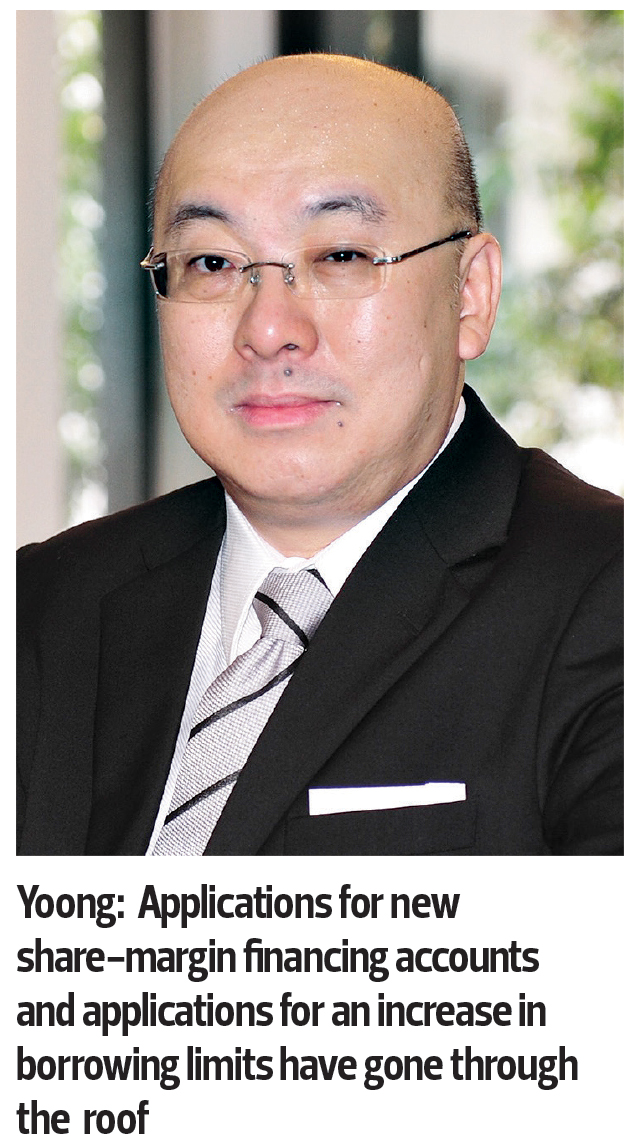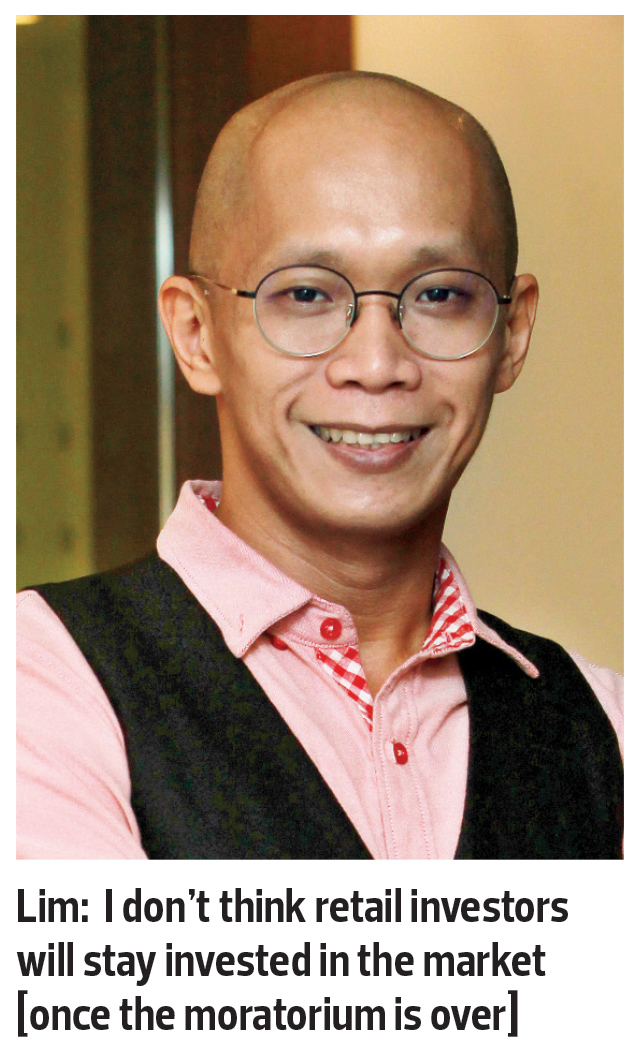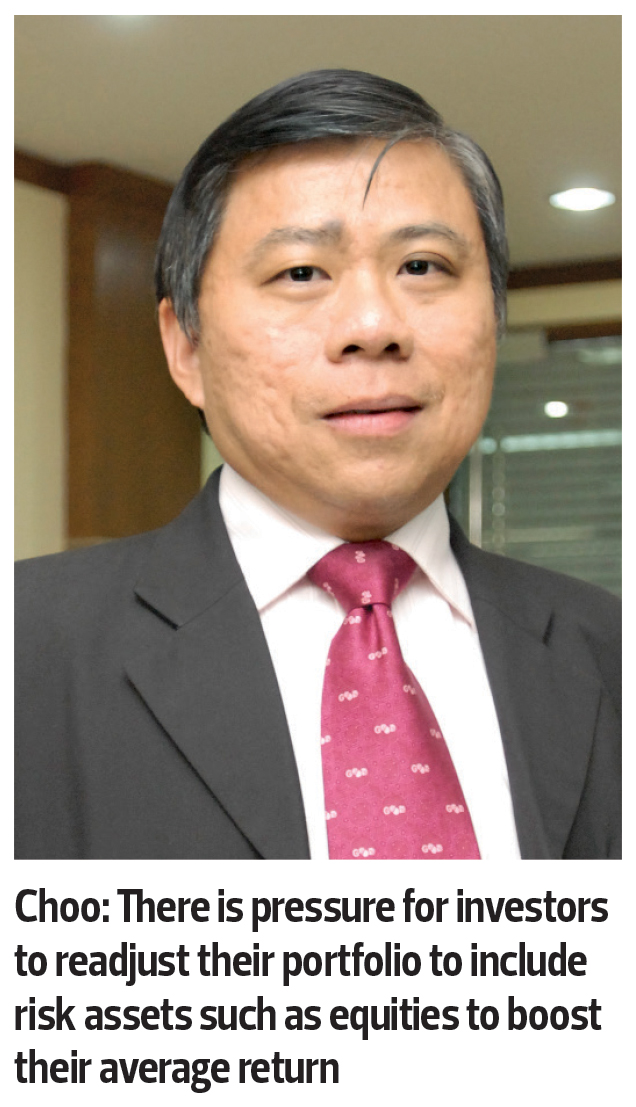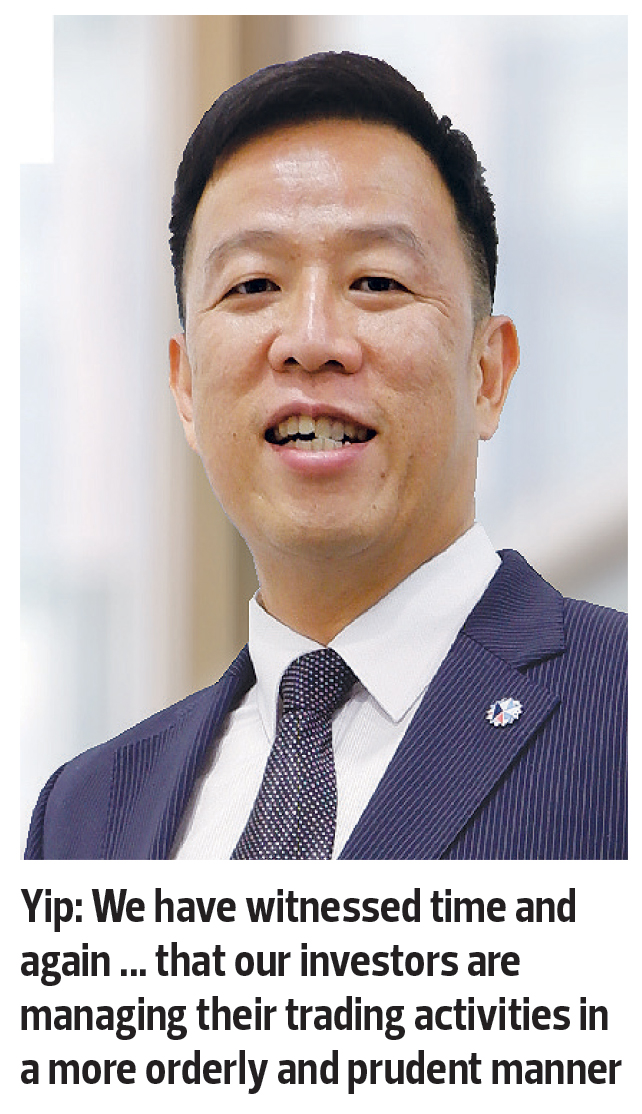IT is amazing how fast things can change.
In March, the world was caught in the “perfect storm” of the outbreak of a new coronavirus, global supply chain disruptions, an oil price collapse and an intensified US-China trade war.
On March 12, the US stock markets suffered their greatest single-day percentage fall since the 1987 crash. And when the Asian stock markets opened the next day, on Friday the 13th, major indices sank across the region, triggering trading halts from Seoul to Bangkok, and from Manila to Jakarta.
Back then, the stock markets appeared to have priced in not only a significant decline in earnings but also a global economic recession.
Closer to home, many coffee shops, eateries, retail shops and hotels struggled to stay afloat under the Movement Control Order (MCO) implemented to stem the Covid-19 pandemic. Many businesses shuttered and a large number of employees were retrenched.
Fast forward to August, and global stock markets have risen steeply from their March lows, driven by news that potential coronavirus vaccines could be available in the coming months, and, perhaps, optimism over a V-shaped economic recovery.
Another factor that has helped ignite markets is that so many of them are awash in liquidity.
Trading volume and value on Bursa Malaysia have gone through the roof as retail investors return to the equity market in a big way.
The stock exchange has said the number of new Central Depository System (CDS) accounts opened from January to July this year jumped 125% to some 218,000, from about 97,000 a year earlier. Given the unprecedented surge, it has been reported that there is roughly a two-to-three-month backlog of pending new accounts, totalling about 100,000.
Stockbrokers, traders and remisiers are currently overwhelmed by the flood of new clients, while at the same time, busy executing trade orders for existing clients who have rediscovered their appetite for shares.
This year was supposed to be a really, really bad year. But where? Not in the stock market, it would seem.
As it is, the stock market rally seems far from over, given that investor sentiment is so bullish one might be forgiven for thinking the pandemic never existed.
Is this the best of times, the worst of times, or both?
The minor correction in the past two weeks could serve as a wake-up call for investors who have been overly-optimistic amid the market frenzy. Moreover, concerns have been raised over the possibility that liquidity could dry up soon, given that the six-month moratorium on loan repayments is about to come to an end.
Nevertheless, investment experts The Edge spoke to opine that the low-interest-rate environment will continue to fuel a more active and liquid market.
Loan moratorium ending soon
Because of the reprieve from servicing payments during the six-month loan moratorium period, many investors had extra cash to dabble in equities, partly contributing to the inflated trading volumes in recent months.But when the moratorium ends on Sep 30, what impact can we expect it to have on the stock market? Will investors have to cash out of equities to resume their loan repayments, or will they stay invested?
According to regional private equity investor and former investment banker Ian Yoong, there will definitely be retailers liquidating a portion of their portfolios to meet the loan repayment obligations due by the end of next month.
“There will be an impact but confidence will be unimpaired until the US presidential elections in November. I have spoken to bank managers and share margin heads. Applications for new share-margin financing accounts and applications for an increase in borrowing limits have gone through the roof,” he says.
Fortress Capital Asset Management (M) Sdn Bhd investment adviser and director Geoffrey Ng Ching Fung acknowledges that retail liquidity may be impacted by the end of the loan moratorium, but he is hopeful that domestic liquidity in the market will still stay fairly elevated, as long as sentiment in the global and regional equity markets remains supportive.
“Whilst we do agree that the disposal liquidity available to retail investors would be higher during the loan moratorium — which would lead some to use the liquidity, which would otherwise be used to repay loan instalments, to participate in the stock market — we don’t think that the loan moratorium fully explains the high trading volumes,” he says.
Ng points out that some other behaviour exhibited by retail investors hints at the utilisation of additional savings, personal loans and qualifying withdrawals from the Employees Provident Fund (EPF).
“Then there is also the dramatic increase in day trading, which allows retail investors to turn over their cash positions multiple times in a day,” he notes.
Maybank Kim Eng head of regional equity research Anand Pathmakanthan observes that as stated by the Minister of Finance when announcing the Prihatin economic support initiatives in late March, the loan repayment moratorium is the single-largest item in the package, estimated to be worth RM100 billion of the RM250 billion Covid-19 relief package.
“Definitely, it is a big help to household and business cash flows. However, we do not believe this loan moratorium by itself is a major contributor to the higher retail participation and overall Bursa trading volumes,” he says.
Given the highly uncertain outlook for the economy, it would be only the most risk-loving beneficiaries of the loan moratorium who would divert their cash flows to undertake trading activities, Anand points out. “We believe the expiry of the loan moratorium by itself will not result in large-scale position liquidation and exit by retail investors.”
However, EquitiesTracker Holdings Bhd’s head of research Lim Tze Cheng disagrees. “The liquidity will dry up, that’s for sure, and retail market participation will actually decrease. That’s my take. I don’t think retail investors will stay invested in the market [once the moratorium is over]. I think they will withdraw the money ... it may even have started [already],” he warns, adding the selling pressure could be significant.
“Just take a simple calculation — the loan moratorium is around RM15 billion excess cash a month, so even if you assume 10% goes to the stock market, that’s already RM1.5 billion a month, so it’s quite significant. And that explains why our market volume and participation are suddenly so high,” he elaborates.
Low interest rate environment
At 1.75%, the current overnight policy rate (OPR) is at its lowest level since it was introduced as the financial system’s interest rate framework in 2004. Within a span of seven months, the OPR has been slashed by a total of 125 basis points (bps). As Bank Negara Malaysia reduced interest rates, the government turned to fiscal stimulus to help revive the economy.But how will the low interest rate environment impact the performance of the stock market? Essentially, low interest rates could mean lower monthly instalments, and hence, more cash in hand for investors.
Will this prompt investors to move their money into the stock market in search of higher returns? The straight answer is yes.
TA Investment Management chief investment officer Choo Swee Kee says a low interest rate environment means that capital is abundant and cheap. Other than lower monthly instalments, it also means funds can be borrowed cheaply to invest in risk assets that generate higher returns than the cost of borrowing.
“The difference between the return and interest rate would be the profits from borrowing. The larger the difference, the more incentive there is to invest in the market,” he stresses.
A low interest rate environment also means that retirees, pension funds, and minimum-return investors may not be able to meet their return objective if they continue to invest in traditional fixed-income instruments.
“Hence, there is pressure for them to readjust their portfolio to include risk assets such as equities to boost their average return,” says Choo.
UOB Asset Management (M) Bhd chief investment officer Francis Eng concurs, as retail investors have seen the 12-month fixed deposit (FD) rate decline to between 1.8% and 1.9%.
“With interest rates at such low levels, some investors would be looking for a return pick-up from other asset classes including equities. For example, the Malaysian equity market dividend yield of more than 3% is higher than the prevailing fixed deposit rates, in addition to potential capital appreciation,” he explains.
Affin Hwang Capital deputy group managing director Yip Kit Weng also agrees that low interest rates will prompt investors to move money from the bond market and savings to the equity market, resulting in stronger demand for equities and better stock prices.
“We have witnessed multiple interest rate cuts to levels not witnessed for a long time. It will also encourage consumer and business spending, which then triggers improved corporate earnings and better stock prices.
“Besides, we will see the ease of borrowing money, where many companies will issue new bonds to finance expansion. There will be a lower cost of financing, encouraging more equity trading at a lower cost of trading,” he adds.
As a low interest rate environment means current FD rates are much less attractive, Amundi Malaysia head of equities Andrew San says the stock market would be the natural place to pick up additional returns. But he expects the additional supply of liquidity to be gradual, as old FD accounts mature.
“On the demand side, this is a function of sentiment and we are likely to see this being pulled down initially post the loan moratorium, before a gradual recovery takes place. In terms of the level of retail participation that we may eventually experience, in a low interest rate environment, we may well see a higher level of retail participation as compared to the pre-Covid period, but we don’t think it would be as high as what we saw during the July period,” he opines.
Margin calls
The recent price correction of rubber glove stocks may have triggered some margin calls. If investors need to top up, where would they get the money? Would it be from previous gains?The end of the loan moratorium could also mean investors may not have sufficient fresh money to top up.
Fortunately, many securities firms tightened their share margin financing caps in June, and hence, any sell-down or forced-selling activities may not be too significant.
Private equity investor Yoong says the banks and investment banks have been prudent, as the capped prices of rubber glove stocks are about 25% to 50% of current market prices.
“Let’s use an example of a stock trading at RM10. The share price cap for share margin purposes is 30%. The stock therefore has a capped price of RM3. The lender will extend, say, 60% of the RM3, which works out to RM1.80. Many rubber glove stocks have to fall 50% to 70% from their current prices to trigger mass forced selling,” he explains.
Fortress Capital’s Ng is also unfazed as he believes the rally in glove stocks resulted from a lack of choice because the other sectors have not been as attractive to investors.
“In terms of margin levels and credit risks, we believe the local broking community today has very robust and mature processes to manage its credit risks resulting from margin activity,” he says.
Maybank’s Anand also doesn’t believe the declining prices for rubber glove stocks specifically will result in large-scale margin calls or forced selling.
“Based on our feedback, brokers are valuing glove stocks collateral at far below market price (30% to 40% below per share margin financing caps) so there is a very comfortable margin buffer. At the same time, the core fundamentals of the glove stocks remain robust. And hence, even if there is a wave of selling, it is not a bubble bursting but more likely healthy profit-taking given the strong underlying fundamentals,” he says.
Equities Tracker’s Lim says margin calls will depend on whether the share price falls. He reiterates that once the loan moratorium ends, liquidity will dry up, but it is hard to predict whether share prices will go up or down.
“Don’t forget, institutional investors make up a big chunk of the Malaysian market. The more important question is when the institutional investors will step in after that, or play a more active role. Right now, retail investors are playing the active role.”
Affin Hwang’s Yip says margin calls are just a process adopted by capital market stakeholders to effectively manage and mitigate market risk. This is well understood by all margin clients who have been managing their accounts proactively to minimise forced-selling, which is triggered once margin calls are not rectified.
“Following various investor education efforts by the regulators, the investing public is generally not only equipped with a better understanding of available investment opportunities but also possesses the right knowledge and tools to participate in a confident and informed manner,” he says.
“We have witnessed time and again, both during the March 2020 sell-down and the recent price correction of rubber glove stocks, that our investors are managing their trading activities in a more orderly and prudent manner,” he adds.
http://www.theedgemarkets.com/article/cover-story-when-will-stock-market-party-end








